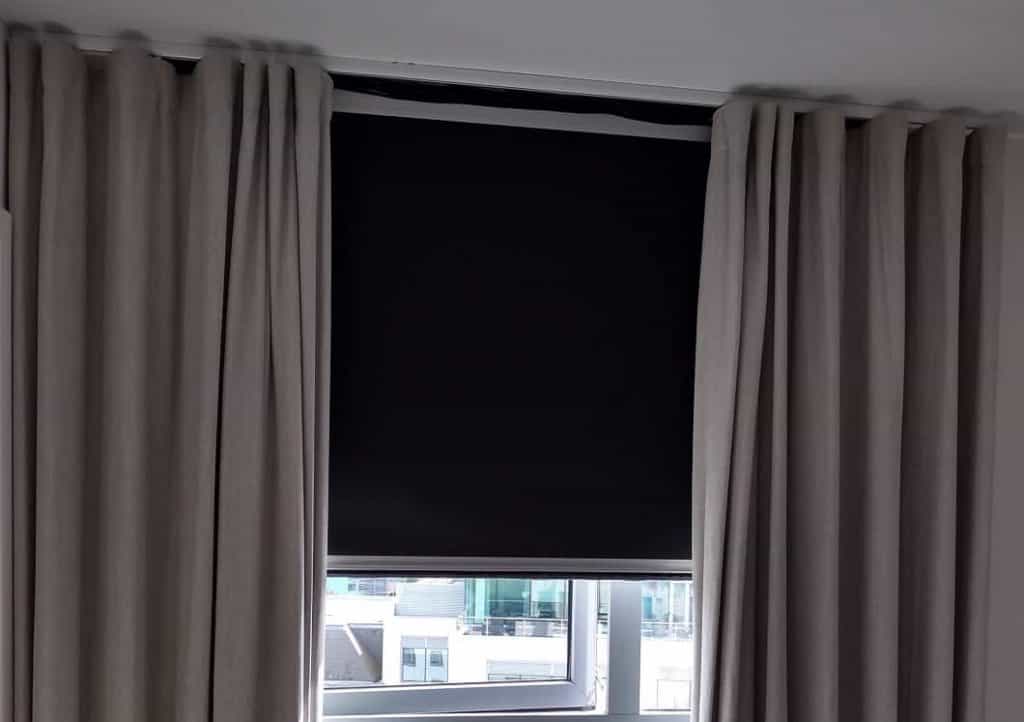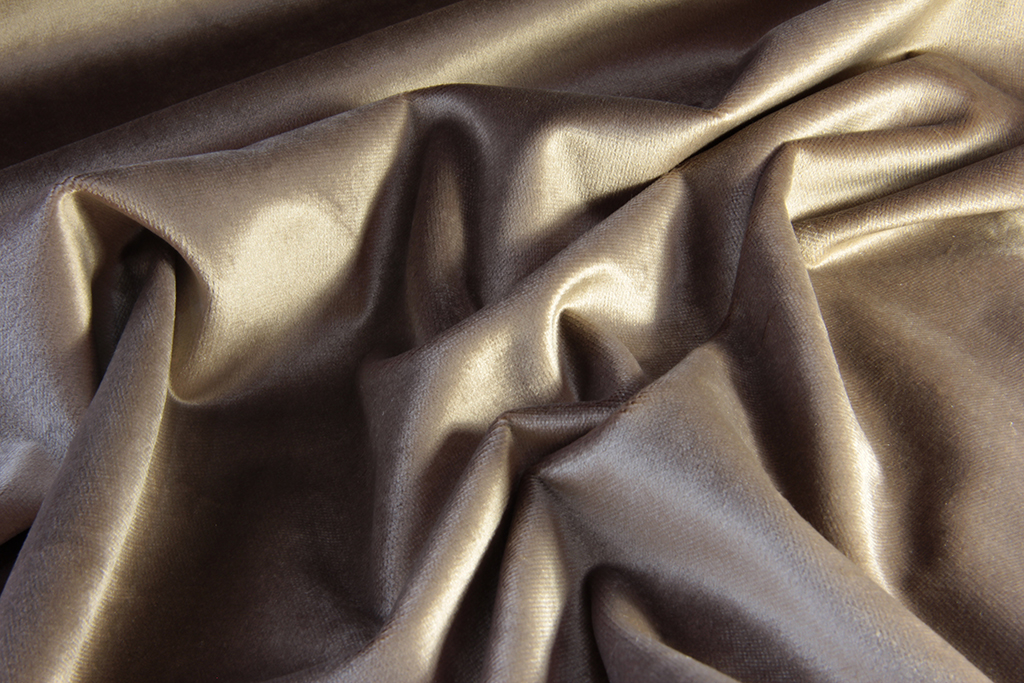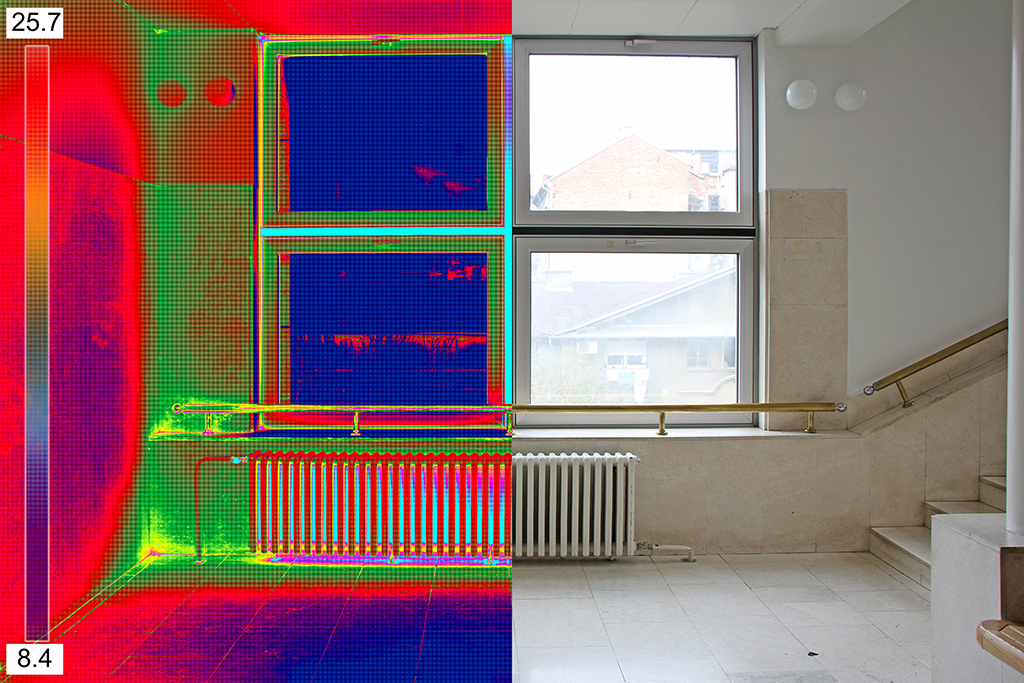Most people hang curtains in a room either for decorative purposes, or to control the amount of light coming in. Sheer fabric curtains can add the right accent to a décor, while thick, blackout curtains are a better choice for bedrooms or home theaters.
Ambient noise is usually a secondary consideration for most homeowners or apartment dwellers buying curtains. Some types of window treatments, however, can be quite effective at limiting the amount of disturbing noise created by traffic, kids, or inconsiderate neighbors.
Before going any further, here’s a somewhat-disappointing truth: no curtains are completely “soundproof.”
Pieces of fabric will never be able to completely eliminate airborne sound, let alone structure-borne noise that travels through walls and floors. However, certain materials can help to absorb and dampen the overall noise transmission in your home.
The purpose of a moving blanket is to be wrapped around furniture and fragile items to prevent damage during transport. These blankets are mainly used for their durability and because of how they're engineered.
Regardless of the brand, the outer shell is often comprised of a durable woven material like cotton and polyester. The inside then features a filler material like cotton that absorbs impacts. While these qualities are suitable for safely storing and moving furniture, they are also perfect for sound absorption.
These US Cargo blankets are made with a woven cotton and polyester shell that’s wrapped around a 100% cotton filler, providing dense layers (weighing roughly 9 lbs) that are ideally suited to capture and reduce airborne sound from outdoor and indoor sources. The blanket is 72” x 80” in size, enough to cover a normal-sized window.
Since it’s a plain-looking blanket and not specifically a window curtain, the US Cargo Control Blanket doesn’t have thermal backing or provide any extra UV protection. It’s just a black, thick blanket designed to do the best possible job of preventing excess noise from intruding your life.
However US Cargo Control knows the intended application and installed grommets/eyelets that allow you to hang them over windows and doors.
My Father worked for 30 years in the moving industry. From experience (folding these neatly in the back of a tractor trailer for two summers in my early 20s), these blankets, regardless of manufacturer will have a "from factory" smell.
Clayton Dillon
If you intend on using a moving blanket to block sound, look for one that's machine washable and consider doing 2-3 cycles of washing and hang drying before you use them. This will help to mitigate any potential lingering smells/odors.
Unlike the US Cargo blanket, these are acoustic curtains you won’t mind showing to your mother.
It’s true that they won’t block quite the same amount of sound as the blanket. But they’ll come fairly close thanks to their triple-weave polyester construction, and their two layers of fabric (attractive in-facing fabric and thermal backing on the window-facing side).
This design does a nice job of trapping airborne sound and damping it considerably. The thermal backing also helps regulate room temperature by keeping cold air at bay in winter, and keeping air conditioning inside the house during summer.
These nicely-priced Nicetown products are made to be used as either curtains or drapes, available in heights from 45” to 108” and in widths from 42” to 52”. There’s a wide selection of solid and patterned designs and colors, and the very dark ones like brown or burgundy will provide nearly 100% light blackout.
The curtains are machine-washable, but be aware that they’re also extremely heavy, with some weighing ten pounds or more (depending on the dimensions you choose).
The grommets at the top of the curtains are solid and won’t rip out – but your curtain rods may bend or even break if they’re lightweight, so be careful before hanging. The same caution extends to the rest of the soundproof curtains on this list.
The RYB Home curtain is designed to serve as a room divider, splitting a large space into two smaller rooms. However, there’s no law saying you can’t use it as a soundproof curtain instead.
When used as a divider it will damp sound somewhat, but noise can certainly still invade the protected area via the space above and below the curtain.
Hang it in front of your windows, though, and the triple-weave polyester fabric (high density polyester yarn is the middle layer) will absorb or damp a considerable amount of airborne noise.
Just as with the Nicetown curtains, there are 14 different colors/patterns available. The darker colors like black and brown will block out close to 100% of the ambient light coming from outdoors, when the RYB curtain is used as a window treatment.
As you would expect, light will still flow above and below the curtain when it’s used as a room divider. There are two layers of identical material front-and-back, with no thermal backing; this heavy curtain comes in 8.3’ to 15” widths and 7’ to 10’ heights.
These Yakamok panels provide about the same noise-absorbing and damping effect as the Nicetown and RYB curtains. They’re made from similar triple-weave blackout fabric with two layers; the backing isn’t thermal, but it will still block most UV rays from entering the room.
The darker colors also provide a nearly 100% blackout of all light and noticeable protection against winter’s cold winds.
Those darker colors are burgundy, navy blue and dark gray, among the eight attractive colors available. These curtains are all 52” wide, but they come in heights from 45” to 108” so you can use them either as standard curtains or full-sized drapes.
The Yakamoks are also machine washable.
These curtains feature triple-weave polyester microfiber construction, thermal insulation backing to protect against cold and UV rays, and a luxurious look and feel.
As large pleated curtains, the folds add another element to their sound damping properties, and they will absorb most outdoor airborne noise and damp reflected indoor sound nicely.
There are 12 attractive patterned colors available, with all choices 100” wide and options from 84” to 108” high. The black and plum purple will do the best job absorbing sound, but there are a number of other darker colors to choose from as well.
The H. Versailtex curtains offer one final selling point you won’t often see in relatively-inexpensive blackout curtains: an eight-year quality warranty.

To preface this section we first need to define what Soundproof Curtains really means:
As mentioned at the top of this article, “soundproof” curtains aren’t really soundproof.
Solid walls, doors, and windows block many of the sound waves that reach your home, but some of that noise still makes it through. Even if most of the outside noise can be blocked, the sound generated inside your house is constantly reflected and amplified as it bounces off these surfaces.
Curtains, whether they’re made from flimsy decorative lace, or multiple layers of heavy-duty fabric, microfiber, vinyl or fiberglass, can’t block all of the sound bombarding the exterior and floating around the interior of your home.
Meaning, if walls and windows can’t do it, porous curtains certainly can’t.
In fact, fabric curtains with properties approaching “true” soundproofing capabilities would have to be made from material that’s at least a couple of inches thick – impractical at best and unavailable at worst – and they also have to be attached to the structure that forms the wall or window frame.
Structures like window plugs or inserts can engineered to block sound transmission through your window. While these plugs are made to be removable, they're often heavy (50-70 lbs), expensive, and defeat the purpose of having a window as they completely obstruct the view.
Here’s what all of that means:
“Soundproof” curtains (commonly called acoustic curtains) are really noise-damping curtains, designed to absorb as much sound as possible. They may cut the level of noise way down, but they can’t completely block it.
Compared to decorative curtains, acoustic curtains can reduce noise by nearly 10 dB. To outline:
Two key factors determine the effectiveness of acoustic curtains: the material they’re made from and their thickness.
The materials that are best at absorbing sound are noted as being porous and thick.
When it comes to materials that are specifically regarded for their soundproofing ability, they'll be rated for either NRC, STC, or IIC.
Unfortunately, it’s unlikely that you’ll find consumer curtains labeled with an NRC or STC rating as they're generally used for “true” soundproofing materials like foam, and other commercial and industrial products.
Here's a quick overview of the pertinent ratings:
A materials STC rating describes it's ability to attenuate airborne sound.
While more can be said about STC ratings, essentially, the higher the rating, the better the materials ability to reduce airborne noise transmission.
Note that STC ratings are based on a logarithmic scale. Meaning increases in only a few points can result in significant decibel change.
A materials NRC rating or Noise Reduction Coefficient is a measure of it's effectiveness at absorbing sound in any given space.
NRC is measured with what appears to be a narrow scale of 0.0 - 1.0. This number appears as a decimal and can be easily converted into a fraction.
To illustrate:
Perfect Relection: NRC 0.0
Perfect Absorption: NRC 1.0
To demonstrate:
A material with an NRC rating of 0.3 will absorb 30% of the sound while the remaining 70% will be reflected into the space.
A material with an NRC rating of 0.03 will absorb 3% of the sound and 97% will be reflected into the space.
Meaning the higher the NRC rating, the better the soundproofing ability of the material.
Learn More: Noise Reduction Coefficient Explained
While this metric would certainly be useful to look at when purchasing soundproofing curtains, it is rarely supplied by manufacturers.
So if you can’t compare NRC or STC ratings, what factors do you look at?

Fabric should be porous, thick, and dense – these factors enable more sound to be damped and absorbed.
Velvet, suede and certain types of polyester are usually the best choices because they’re manufactured with extra fibers in them, making them denser. If you can find a triple-weave fabric, it’s a particularly good choice.
Then, consider the curtains’ thickness. That doesn’t simply mean how dense the material is, but also how many layers of fabric are used to make the curtains. Acoustic curtains are usually made with two layers of fabric. That serves two purposes:
This design is normally used for what are sold as “blackout curtains.” They will have dual layers of fabric, and the most effective ones will also come with multiple pleats or folds which results in more material to help with sound absorption.
Curtains with thermal insulation backing will also make them more “soundproof."

Dense material is likely to be heavy, so don’t be surprised if it’s difficult to find lightweight acoustic curtains. There’s nothing wrong with the heavyweight ones; just be aware that you’ll probably need sturdier curtain rods, and the curtains themselves should be manufactured with a good number of heavyweight support grommets at the top.
We’ve mentioned thermal backing, and it’s useful for more than noise reduction. It’s also the best choice in many climates, since it minimizes heat transfer.
Chances are that you want your curtains to keep light out, not just sound. Manufacturers are better at detailing the amount of sunlight that they’ll block than they are at determining and publicly releasing NRC ratings. That information will usually be described as the percentage of light that they block out.
Naturally, you’ll want to consider the color and size of the curtains, to ensure that they look good in your room and are long and wide enough to have the desired effect.
Remember that light (and sound) can “sneak in” through the open sides of the curtains, so you may want to buy curtains which will extend well past the edges or bottom of each window.
Finally, the old adage “if one is good, two is even better” may be worth thinking about. Many people have found that hanging two sets of curtains, one in front of the other, is a good way to block out as much noise and light as possible.

Snoringsource.com is a participant in the Amazon Services LLC Associates Program, an affiliate advertising program designed to provide a means for website owners to earn advertising fees by advertising and linking to amazon(.com, .co.uk, .ca etc) and any other website that may be affiliated with Amazon Service LLC Associates Program.